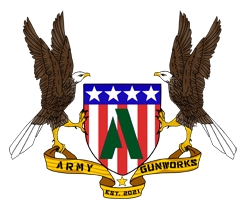Preface
I need to start this by saying I am not a lawyer and I am not giving legal advice. However, home defense is a topic I know well, and I do have over 30 years of law enforcement and 41 years of military experience, and I have been in gun fights. In addition, I am not being sponsored by any company and I receive no profit by recommending one firearm over another. This is my personal opinion and some of you might not agree with my recommendations.
Home Defense 101
This article is aimed at the infrequent firearms user. When I say infrequent users, I mean someone who has bought a firearm and shoots it at the range once or twice a year and can hit a target at 25 feet. In a life-or-death situation, your adrenaline will be pumping, there may be less than ideal lighting and your target will not be stationary.
If you do not fit in this category then much of what I say here is not applicable to you.
You most likely found this article because you are an infrequent firearms user, but you care about your family and want to protect them as best you can– making the right firearm selection is part of that. Now, home invasion is a scenario no person hopes to face, but should be prepared for nonetheless.
So here’s the facts.
Most home invasions happen between 10:00 AM and 3:00 PM when the home is not occupied. I am referring to the home invasions that occur between midnight and 4:00 AM, when you and your family are asleep. In any home invasion scenario, the first thing you should do is dial 911. Police will respond to a hangup 911 call or you can leave the line open if you can’t talk. The police may not get to your home in time to stop the home invader– but regardless of the ending– you are going to need them there sooner or later. If you can talk, tell the dispatcher you are experiencing a home invasion. It is very important that you inform the dispatcher you are armed with a gun.
Choosing the Right Firearm for You
There are several things to consider when selecting a firearm for home defense.
One of the primary considerations is stopping the criminal(s) that has invaded your home and threatens to cause you or your family harm. To truly defend yourself and your family, you must consider where that bullet will end up if you miss. Unless you live in a concrete box that prevents rounds from going through walls and entering another room– or worse yet exiting your house and going into your neighbor’s home– you should consider penetration. Most bullets fired from a center-fire rifle have this type of penetration and can easily go through walls. With this in mind, I will exclude center-fire rifles from our consideration list.
That leaves shotguns and pistols as our options. I will say from personal experience that there is nothing like the sound of a pump-action shotgun chambering a round to change the minds of others. I do not rule out shotguns of any type to defend your home. But once again we go back to the penetration consideration, so slugs should never be used. A small shot, up to BB (.18 inch in diameter) is more than sufficient to stop an attacker. Another good thing about shotguns is accuracy. Generally, at short distances in a home defense scenario, extreme accuracy is not required because you are launching between 50 and 150 small pellets, at 1275 feet per second (fps) at your attacker (from a 2-3/4 inch 12 gauge shotgun round). Some of you are now thinking: “But what about buckshot?”. I know that the larger (.22 inch size and larger) buckshot will stop an assailant, but you have to have the presence of mind to know what your backdrop is. In a high-stress situation, it will be difficult for most people to have that kind of composure. So for the novice, I would stay away from buckshot. Additionally, when it comes to home defense, size matters. Shotguns are generally long and unwieldy to maneuver in enclosed spaces, so it would not be my first recommendation for a less experienced firearm user.
The other category is pistols. It is from this category that I would make my recommendation to infrequent firearms users. Everyone has their favorite pistol manufacturer, caliber, and type. The most popular handgun purchased is the semi-automatic in .9mm. There are numerous manufacturers of semi-auto pistols and I could spend hours talking about which one is better and why, but for the sake of brevity I won’t do that in this article. In any case, a semi-auto is not what I would recommend for an infrequent user. I would recommend something that has no levers, buttons, or safety– that is a revolver. With a revolver, you point and shoot. Most of the revolvers have six shots and at close range, the gunfight will be over by then, so reloading is not a consideration. A revolver will not jam and are extremely reliable. Which brand of revolver you select is a matter of personal preference. I would recommend a Smith & Wesson or Colt, double action, in .38 special. Although the single-action revolvers are less expensive, you should stay away from them because you have to manually cock the hammer with each shot. With a double-action revolver, you just squeeze the trigger and it will fire.
Whatever type of weapon you choose, it is critically important that you know how to use it. I would recommend practicing with it at least twice a year, if not more often. Being comfortable and familiar with your firearm will be something you fall back on in a high-stress scenario– and it could save your life.
Choosing Ammunition
The ammo you select is a personal choice, but the Glaser Safety Slug is my first recommendation. The ammo is now made by the Cor-Bon corporation and is available in a .38 special. This round was originally designed for the Sky Marshalls (now called Air Marshalls) in 1974. The round is a soft outer layer that contains a small shot (like a shotgun) suspended in a gel. The reason this round falls at the top of my recommendation list is that they were specifically designed to stop hijackers without penetrating the thin aluminum layers of a pressurized airplane, so it will not penetrate the walls of your house. As a second choice, I recommend lead wadcutters if you can find them. They are low-power rounds that will not, in most cases, penetrate exterior walls. Jacketed hollow points (JHP) rounds are more powerful, easier to find, and are another good choice.
Storing Your Firearm Safely
The most important aspect of bringing a firearm into your house is storing it safely. A firearm can be just as dangerous as it is useful if it is improperly stored. There are several high-quality biometric handgun vaults that prevent people (especially children) from getting to your weapon, but still allow you to use it quickly. Educate all members of your household on what a gun is, how dangerous it can be, and how to safely handle it. Safety is the top priority.
Conclusion
For size, low recoil, and ease of use there is nothing like a high-quality double-action revolver for home defense. The type and caliber of ammunition you choose matters. Don’t forget to secure your firearm. Always know what you are shooting at and what’s behind it.
But most of all, do what you feel is the right choice for you and your family.


Recent Comments